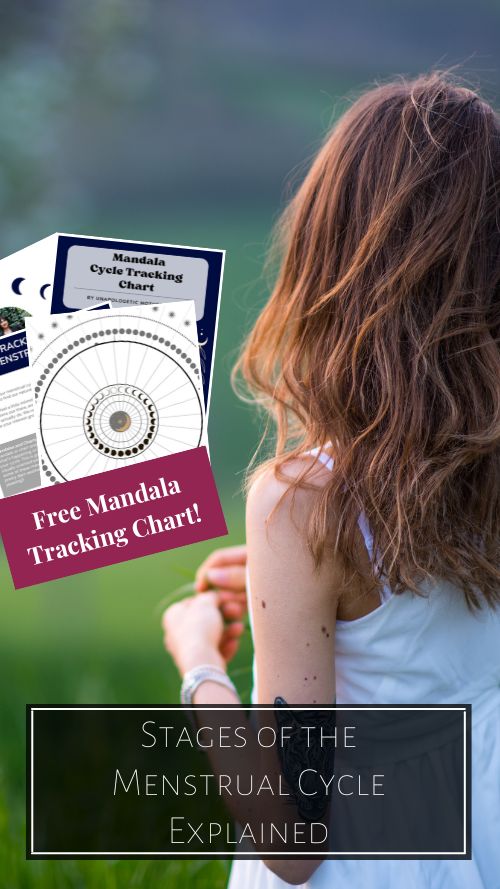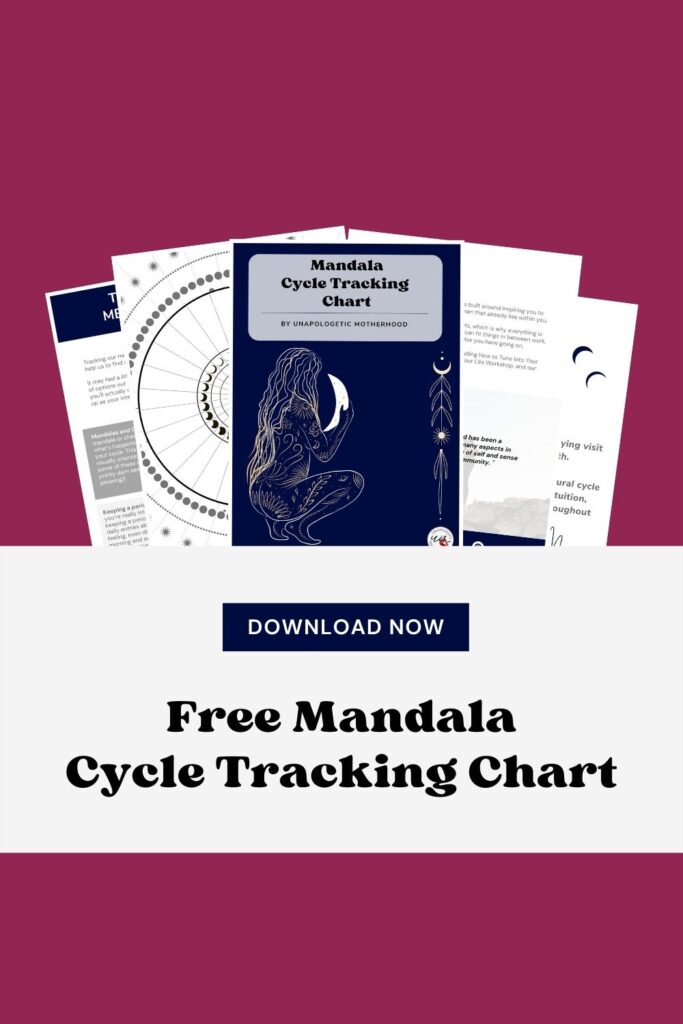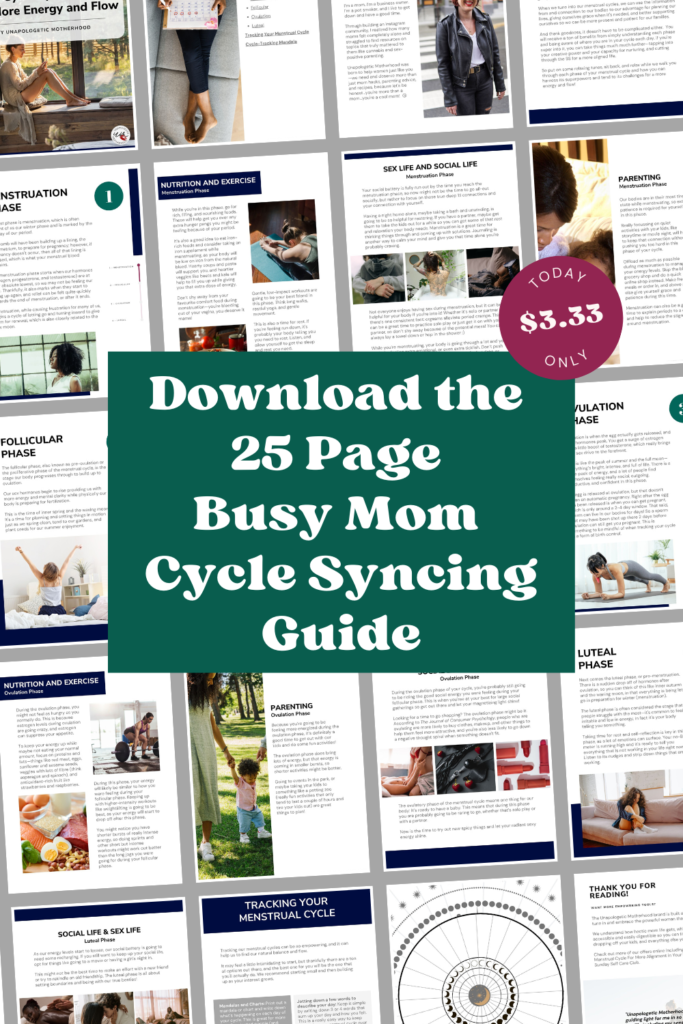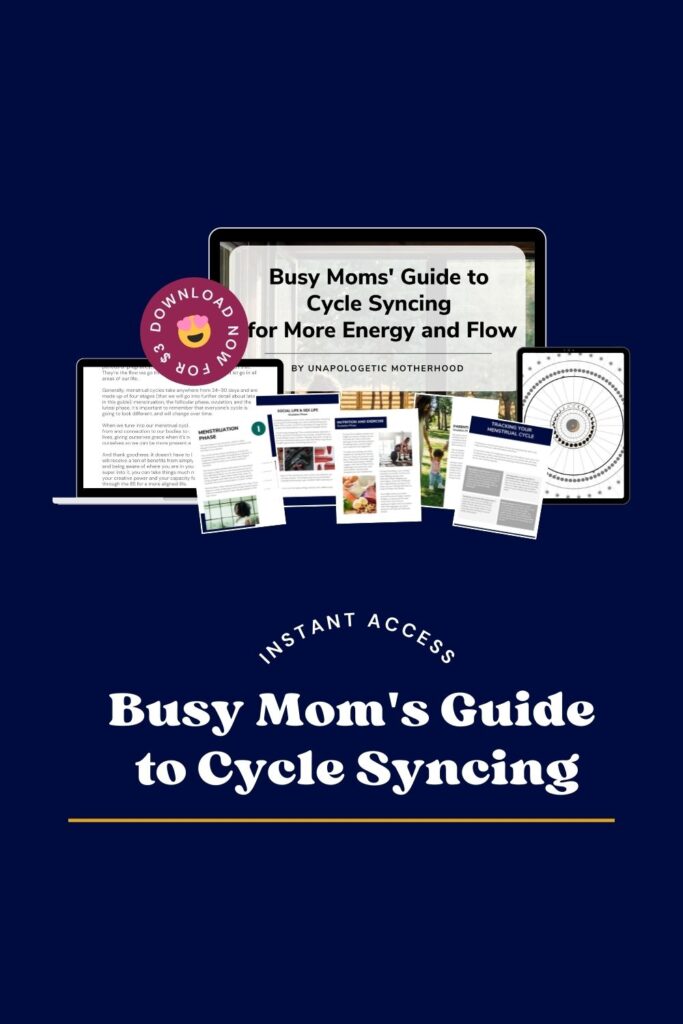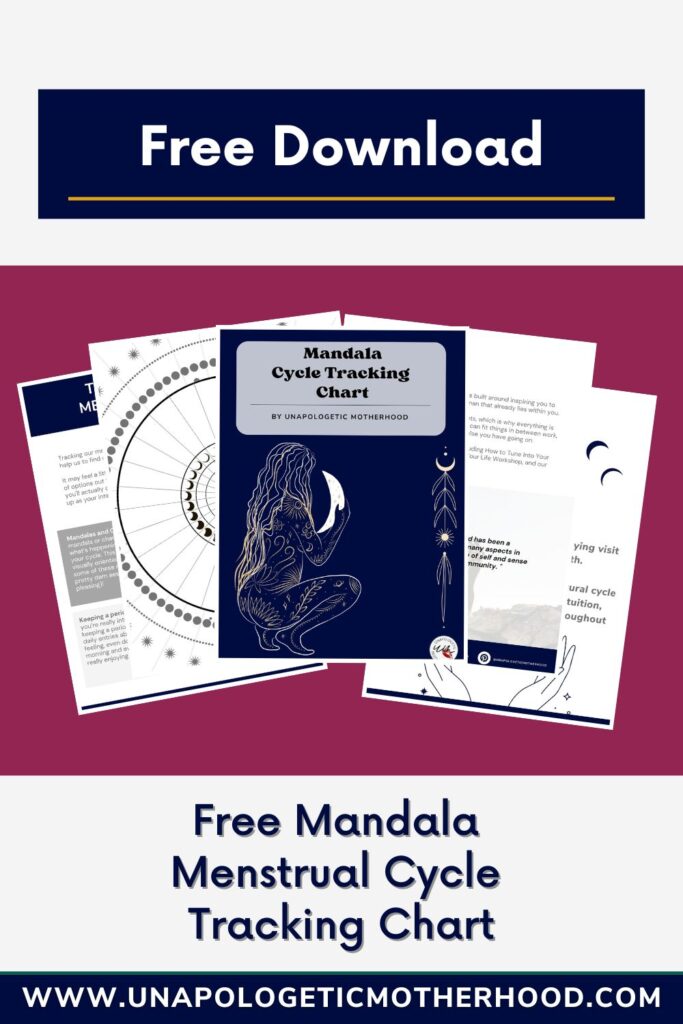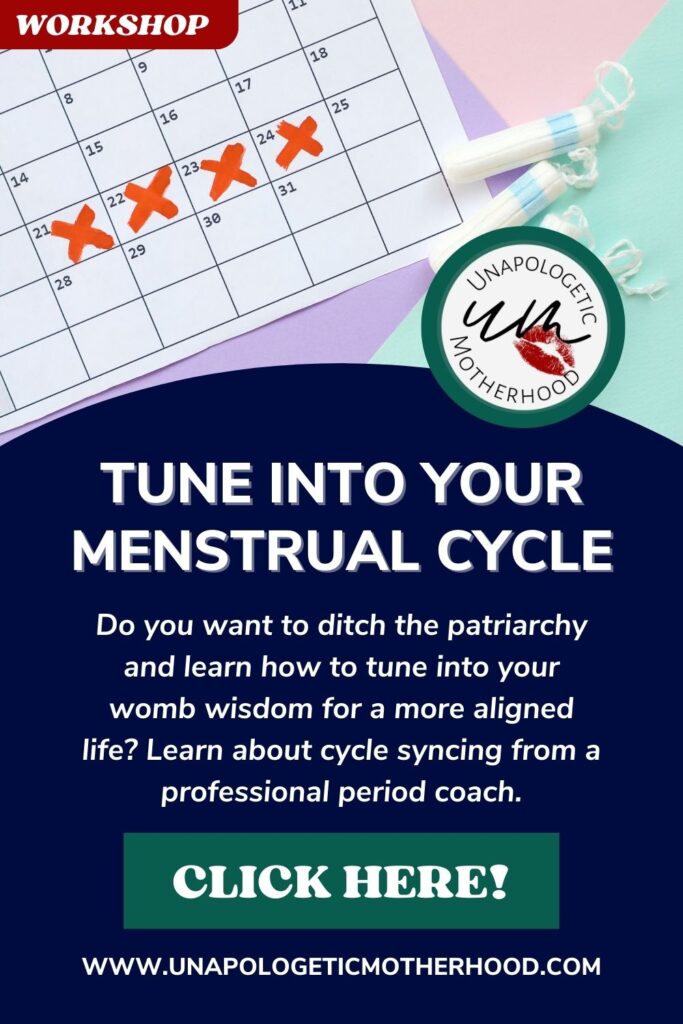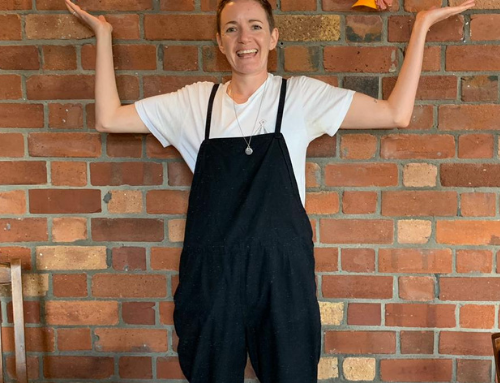For most of us with female sex hormones, the menstrual cycle and menstruation is something that plays a big part in our lives. We think of menstruation as getting a period and dealing with all the annoyances that come with it. What a lot of us don’t realise (thanks sex ed for the lack of education) is that the menstrual cycle is something that our bodies are always going through.
There’s so much to learn about the menstrual cycle so we’ve brought you this mini-guide with some of the basics, including the different stages and how we can track our menstruation and a Free Downloadable Mandala Cycle Tracking Chart! If you want to learn more and deep dive into this topic, don’t miss our UM Club Episode with Period Coach Sarah Starrs and all the amazing info she shared with us! You can also check out our $3.33 Ultimate Guide to Cycle Syncing and our Menstrual Cycle Masterclass with Sarah.
Related Articles:
UM Club Episode Menstrual Cycle 101 with Period Coach Sarah Starrs
7 Symptoms and Signs of Hormonal Imbalance
9 Body Acceptance Quotes to Help Moms Improve Their Body Image
Calming Mantras for Moms Who Need a Break
What is the Menstrual Cycle?
The menstrual cycle is the course that our bodies go through to get the body ready to be pregnant, resulting in our period if fertilization doesn’t occur. We tend to think of it as around 28 days, but everyone’s cycle is going to look different, and will probably change over time too. The menstrual cycle happens in four stages that we’re going in-depth with below.
The Four Stages of the Menstrual Cycle
Think of the four stages of the menstrual cycle like the four seasons or four stages of the moon. Our bodies are constantly changing and our menstrual cycle is moving through that change with us, like the seasons change and the moon shifts. The different stages all mean different things and affect our moods, energy levels, and our physical being. Let’s look a little bit more into each stage.
Pre-Ovulation/The Follicular Phase – Inner Spring and Waning Moon
Pre-Ovulation, or the follicular phase, is the stage that happens before our body is ready to ovulate and really acts as the first step that allows our body to do this. Think of this like Spring; everything’s growing and becoming lush again, recovering after winter. The goal of pre-ovulation in the physical and scientific sense is to release the hormones that will stimulate the follicles of your ovaries. This way the ovary will release an egg into your fallopian tube so you can get pregnant that month.
Pre-ovulation tends to mean a rise in energy, and people will often be ready to organise and plan to be social again. The libido also starts to rise here, so you might find that more energy means a higher sex drive too.
Ovulation – Inner Summer and Full Moon
Ovulation is when the egg actually does get released, and your hormones peak. You get a real surge of estrogen and a little boost of testosterone, which really brings your sex drive to the forefront. This is like the peak of summer and the full moon – everything’s bright and intense and full of life. There’s a huge peak of energy and a lot of people find themselves feeling really social, outgoing, productive, and confident in this phase.
Ovulation is when the egg will be released, but it doesn’t mean an automatic pregnancy. Right after the eggs have been released is when you can get pregnant, but this is only around a 3 or 4 day window.
Pre-Menstruation/The Luteal Phase – Inner Autumn and Waxing Moon
Next comes Pre-Menstruation or the luteal phase. There’s quite a sudden drop off of hormones after ovulation, so you can think of this like inner autumn, in that everything is being let go and ready for winter.
Pre-menstruation can be the stage that people have difficulty with sometimes, and can feel really low energy and irritable. There’s a real coming into the self and self-reflection, and a lot of emotions coming to the surface. Like the waxing moon, you’re starting to feel the effects of your period (at least the ones we tend to think of) more here, so you may feel irritable and more tired. Make sure you’re making more time for rest.
Menstruation – Inner Winter and New Moon
Lastly is menstruation, which a lot of people think of as winter. The womb will have been building up a lining, the endometrium, to prepare if a pregnancy was to take place and the fertilized egg was implanted. And if pregnancy does not occur, then that’s all released and that’s what your menstrual blood contains.
This is a time when our hormones are at their absolute lowest, thinking about those main sex hormones, so we may not be feeling out best. Menstruation, while causing frustration for many of us, is really beginning that cycle of renewal here, which is why people often see it as the new moon. Think of it as the start of rebirth and growth in our bodies as we head back towards inner spring.
Tracking Your Menstrual Cycle – What Does that Look Like?
Tracking your menstrual cycle can be something that is so empowering, and can really help us to find balance – but what it means to track our menstrual cycle can sound really confusing. When we chatted with period coach Sarah Starrs in our UM Club Episode, she gave us some great tips on what happens in each stage of the menstrual cycle and how we can track it.
- Mandalas and Charts: One of the most popular forms of menstrual cycle tracking is using mandalas and charts – really just a way for us to write down what’s happening on each day of our period. This is great for more visual people (and some of these mandalas can be pretty darn aesthetic including our free download)!
- Jotting down a few words to describe your day: keep it simple with 3 or 4 words that sum up your day and how you felt. This makes for a really simple way to track your period over time.
- Keeping a period diary/journal: If you’re really into journaling, try keeping a period journal! You can write daily entries about how you’re feeling, even doing them in the morning and evening if you’re really enjoying it!
- Four body check in: Check in with yourself daily and write down how you feel physically, mentally, emotionally, and spiritually. This might seem a little complicated but it can be so worth it, especially as you get more into tracking your menstrual cycle!
While we love these methods, they can seem a little intimidating, especially when starting out. Sarah’s best advice is to do whatever feels best for you and try to remain consistent; if we’re going to track our period and learn from the different cycles, we need to make sure we’re not skipping any days!
Using the Cycles to Help Manage Parenting
Parenting is overwhelming as it is, and throw in a period with bad cramping and fatigue? It can seem impossible. But did you know that tracking the different cycles of your period can help to manage parenting?
We feel different at every stage of our menstrual cycle and we can use this to our advantage. We’re feeling our most energetic and social when we’re ovulating, so knowing when that week is and scheduling playdates for it is really going to help take the stress off of weeks when you just can’t deal with people socially.
When you’re menstruating and feeling just over it, do some more couch time and movie watching with your kids; you keep that connection time but don’t have to use all your energy or patience!
Our menstrual cycles don’t have to be a big scary thing that we can never understand – it’s our body and we deserve to know what’s going on in it! If you want to learn more about all the amazing things that happen during our menstrual cycles, check out the full exclusive UM Club Episode with Period Coach Sarah Starrs, and make sure to save this post on Pinterest to always be able to come back to it!

